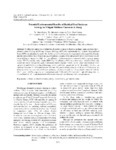
Please use this identifier to cite or link to this item:
http://ricaxcan.uaz.edu.mx/jspui/handle/20.500.11845/871Full metadata record
| DC Field | Value | Language |
|---|---|---|
| dc.contributor | 164375 | es_ES |
| dc.contributor.other | https://orcid.org/0000-0001-5894-2736 | - |
| dc.coverage.spatial | Global | es_ES |
| dc.creator | Muro Reyes, Alberto | - |
| dc.creator | Gutiérrez Bañuelos, Héctor | - |
| dc.creator | Díaz García, Luis Humberto | - |
| dc.creator | Escareño Sanchez, Luis Manuel | - |
| dc.creator | Bañuelos Valenzuela, Romulo | - |
| dc.creator | Medina Flores, Carlos Aurelio | - |
| dc.creator | Corral Luna, Agustin | - |
| dc.date.accessioned | 2019-03-27T18:50:40Z | - |
| dc.date.available | 2019-03-27T18:50:40Z | - |
| dc.date.issued | 2011 | - |
| dc.identifier | info:eu-repo/semantics/publishedVersion | es_ES |
| dc.identifier.issn | 1680-5593 | es_ES |
| dc.identifier.uri | http://localhost/xmlui/handle/20.500.11845/871 | - |
| dc.identifier.uri | https://doi.org/10.48779/shc7-bh95 | - |
| dc.description | Residual feed intake was evaluated as alternative strategy to decrease methane emissions from sheep. About 24 ewes (30±2 kg of BW) and 16 rams (32±2 kg of BW) were individually fed (42 days). Residual Feed Intake (RFI) was calculated for each individual by sex as the difference between actual and expected feed intake adjusted for metabolic body weight and gain weight rate. Animals were categorized (by sex and overall) as low (more efficient), medium and high RFI (less efficient). Methane emissions were estimated using gross energy intake (EF-CH4) and dry matter intake (EM-CTL,)-No effects (p> 0.05) were observed on initial or final body weight neither on average daily gain. Methane production (kg day-1) from low RFI ewes were lower (p< 0.01) beingO. 021 and 0.025 than for high RFI averaging 0.027 and 0.032, respectively for EF-CTPandEM-CFL Positive relationships were found in rams between … | es_ES |
| dc.description.abstract | Residual feed intake was evaluated as alternative strategy to decrease methane emissions from sheep. About 24 ewes (30±2 kg of BW) and 16 rams (32±2 kg of BW) were individually fed (42 days). Residual Feed Intake (RFI) was calculated for each individual by sex as the difference between actual and expected feed intake adjusted for metabolic body weight and gain weight rate. Animals were categorized (by sex and overall) as low (more efficient), medium and high RFI (less efficient). Methane emissions were estimated using gross energy intake (EF-CH4) and dry matter intake (EM-CTL,)-No effects (p> 0.05) were observed on initial or final body weight neither on average daily gain. Methane production (kg day-1) from low RFI ewes were lower (p< 0.01) beingO. 021 and 0.025 than for high RFI averaging 0.027 and 0.032, respectively for EF-CTPandEM-CFL Positive relationships were found in rams between … | es_ES |
| dc.language.iso | eng | es_ES |
| dc.publisher | Medwell Journals | es_ES |
| dc.relation | http://docsdrive.com/pdfs/medwelljournals/javaa/2011/1551-1556.pdf | es_ES |
| dc.relation.uri | generalPublic | es_ES |
| dc.rights | Atribución-NoComercial-CompartirIgual 3.0 Estados Unidos de América | * |
| dc.rights.uri | http://creativecommons.org/licenses/by-nc-sa/3.0/us/ | * |
| dc.source | Journal of Animal and Veterinary Advances, Vol. 10, No.12, pp. 1551-1556 | es_ES |
| dc.subject.classification | CIENCIAS AGROPECUARIAS Y BIOTECNOLOGIA [6] | es_ES |
| dc.subject.other | Methane | es_ES |
| dc.subject.other | residual feed intake | es_ES |
| dc.subject.other | sheep | es_ES |
| dc.subject.other | feed efficiency | es_ES |
| dc.subject.other | parameters | es_ES |
| dc.subject.other | rams | es_ES |
| dc.title | Potential environmental benefits of residual feed intake as strategy to mitigate methane emissions in sheep | es_ES |
| dc.type | info:eu-repo/semantics/article | es_ES |
| Appears in Collections: | *Documentos Académicos*-- UA Veterinaría | |
Files in This Item:
| File | Description | Size | Format | |
|---|---|---|---|---|
| Muro Reyes et al 2011.pdf | 422,39 kB | Adobe PDF |  View/Open |
This item is licensed under a Creative Commons License
